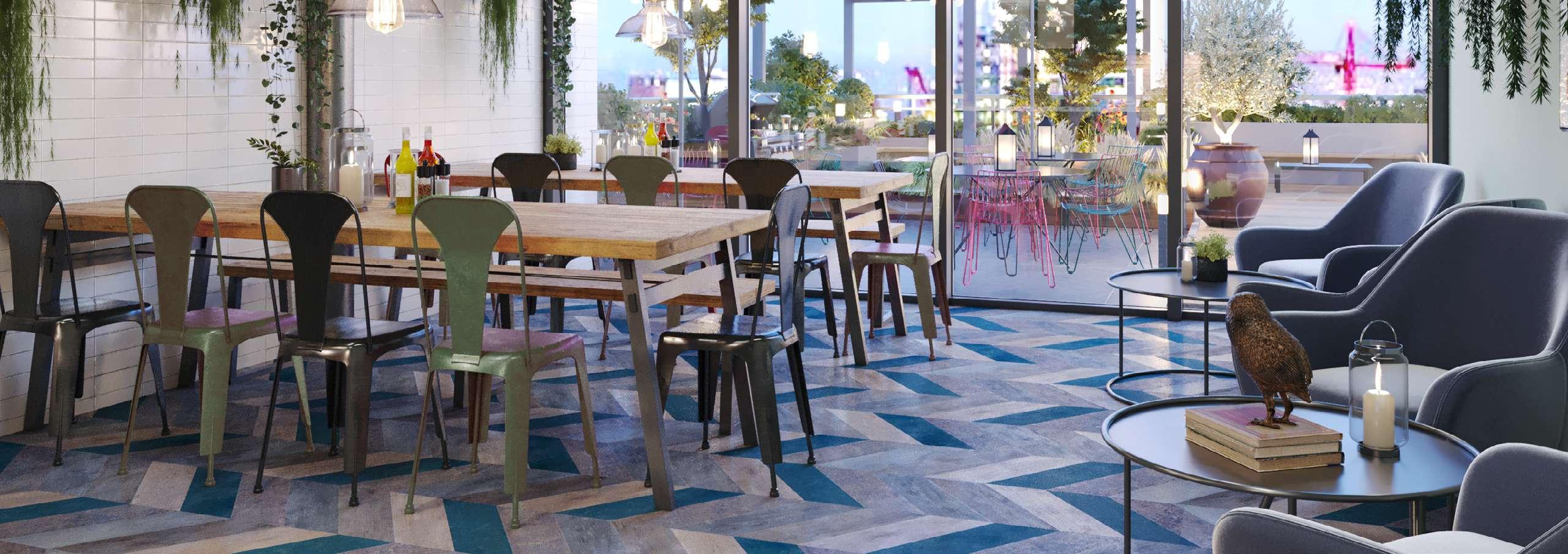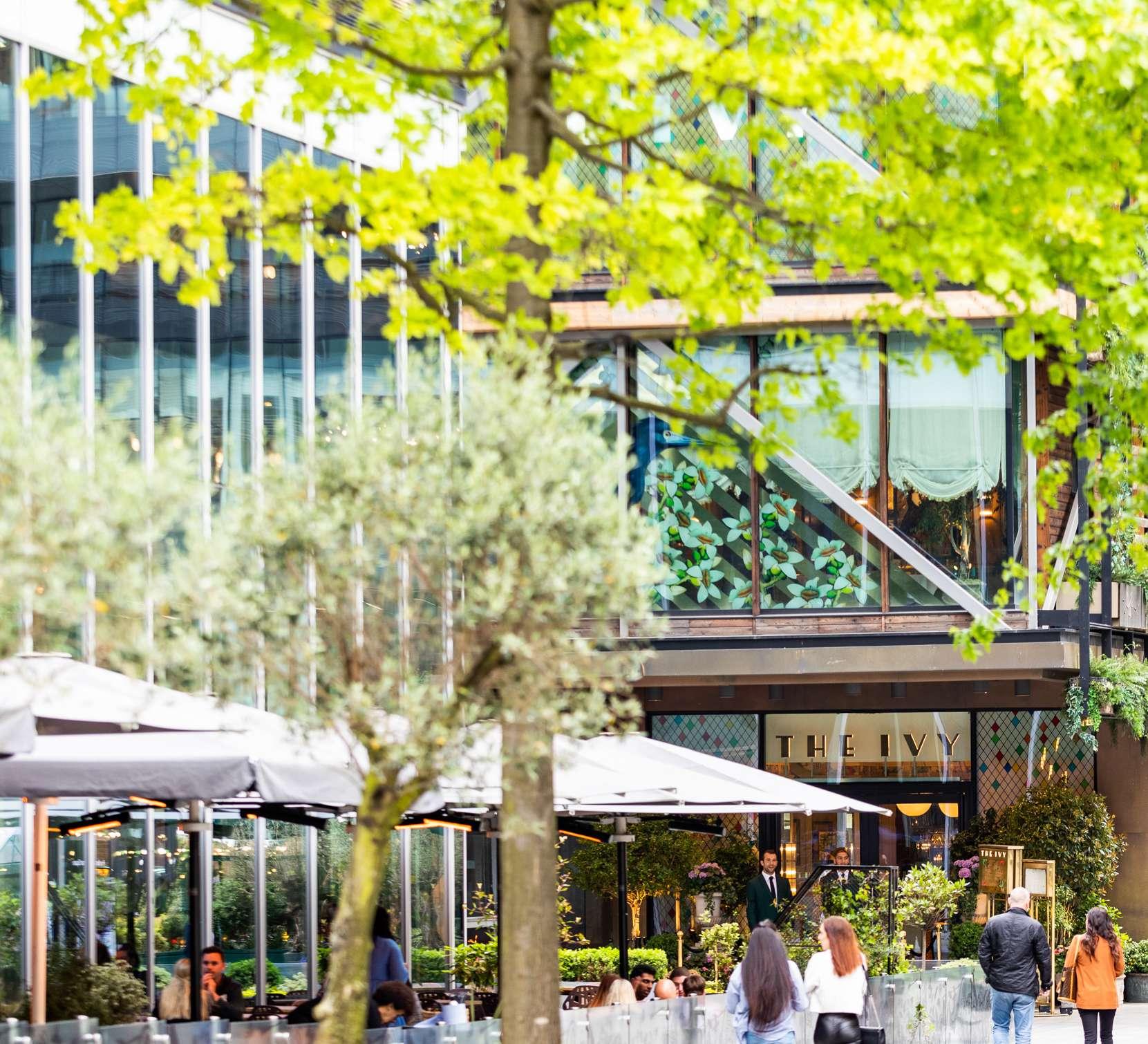The future of hasrentingarrived


Welcome to the future of the UK rental market.
Welcome to City Co-Living.

Think you know rented living? Think again.



Welcome to the future of the UK rental market.
Welcome to City Co-Living.

Think you know rented living? Think again.


Co-living is an evolution of the residential rental market. It is a way of living that places the emphasis on the experience a tenant has and encourages socialisation amongst everyone that lives and works in the building. Co-living developments benefit from high levels of amenity, with the key difference from the Private Rented Sector being that they are run by in-house teams who actively engage with and encourage collaboration and use of the community spaces, giving the buildings and the spaces within them a purpose for the people that call them home. Unlike other types of rental properties that are aimed at a particular demographic – such as students or professionals, co-living developments appeal to the broadest section of the rental market, attracting tenants between the ages of 18 and 30. This mass market appeal makes co-living developments particularly attractive to investors, who can capitalise on tenants renting a property on a longer-term basis, potentially up to as long as 12 years.

There are four key areas in which the co-living offering differs to that of traditional residential buildings. They are:
As a core principle of co-living, residents must have access to a wealth of shared amenities and facilities, and while gyms, cinema rooms, private dining rooms and even coworkspaces have been a feature of standard residential schemes for the last 5 years, it is the community – the ‘co’ – that has been overlooked by developers and operators. In the simplest terms, these developments have failed to deliver spaces with meaning and purpose, that put the residents at the heart of the space. Just because a building offers a range of facilities and amenities for residents to use – should they wish – it does not mean it is a co-living building.

Creating an authentic co-living offering starts at the design stage, where developers have an obligation to ensure that the buildings are made up of spaces with purpose, that complement the lifestyle of the target market. Whilst operators are responsible for ensuring that those shared spaces come to life, with in-house resources employed to engage with residents, encourage the residents to engage with one another, organise communal events, and ultimately encourage the use of the shared spaces as an extension of the resident’s home, not simply an optional amenity located in the building.
Many of the existing ‘co-living’ offerings in the UK have been met with a negative response from investors, market commentators and the rental market alike, mainly because the developers and operators of these buildings have not given enough thought to the private space of the residents and have underestimated an individual’s desire to have a home within a community.
In fact, many of the current ‘co-living’ schemes, are more akin to HMOs, with a
resident’s only private space being a bedroom and en-suite, whilst kitchens, living spaces and any other amenities are shared by everyone.
In short, co-living schemes that don’t offer selfcontained apartments within the building, alongside community facilities, remove a resident’s option to choose how involved they are with their community, and in doing so remove the flexibility and choice that the modern rental market wants from their living experience.
Co-living offers a home within a community
There are four key areas in which the co-living offering differs to that of traditional residential buildings. They are:

While digital platforms and social media have allowed us to be more connected than ever, yet at the same time have removed the need for human contact with one another, demand for co-living schemes from the young people who make up the biggest proportion of the UK’s rental market has dramatically increased.

Having been born into a ‘digital first’ world, this generation of renters do not remember a time before instant messaging, video calls and real time exchange of content over thousands of miles. Growing up with access to anything at the touch of a button – including other people – has left many young people feeling disconnected and isolated from the world. So, it isn’t hard to understand why the same
generation of people are now seeking a place to live where community is encouraged, face to face interaction is championed and the relationships amongst the residents are nurtured.
By employing dedicated community managers and professionals to bring the communal spaces to life, create events in the building, and encourage communication within the community, co-living benefits the mental health and wellbeing of its residents, by making sure that no one falls by the wayside, and always has the option to be included in what is happening within the development.
Unlike other residential buildings that are only suitable for renters during key stages in their life – for example, their university years, post graduate years or first few years in the world of work, co-living bridges the gaps between student, graduate, and young professional, offering young people a home and a community lead environment that they can call home from 18 to their early 30s.
By expanding the demographic that a building is suitable for, not only creates a more enriched community for the residents but it also allows operators to ‘own’ a customer for a longer period - potentially for as long as 12 years. As the
younger generation become more accustomed to co-living, many do not wish to leave the ease and flexibility of managed accommodation behind as they progress through their education and professional career. For investors, this is extremely significant, as it means their properties will maintain high levels of occupancy and generate returns that are stable and secure for the long-term.
Larger demographic & the opportunity for longer rental periods



Ultimately, the best property investments will be those that are best suited to the needs and wants of the rental market. In order for investors to enjoy high yields, strong demand and increasing capital appreciation, it is important that they understand what it is about co-living that means it will be in demand from today’s modern rental market for the long term, these include:
As more young people in the UK become lifestyle renters, there is growing demand for a community-centric living experience that extends further than a few token facilities and communal areas. As young people continue to strive for a living experience, as opposed to somewhere just to rent through necessity, co-living will increase in popularity.
Therefore, developments that have not adapted to the market will fall by the wayside for this target group of 18 to 30-yearolds. Additionally, as many of this demographic are from overseas or further afield across the country, the social and community-focused lifestyle that co-living offers is pivotal to the popularity of the offering.


By focusing on the resident’s experience within a development and encouraging them to utilises the spaces and attend and put on events within the building, residents will feel a strong sense of community and security within their home, whilst also feeling that their needs are being prioritised by the operator. This will naturally deliver stronger returns to investors by increasing resident retention within the building and differentiating the brand offering within the market.
As co-living aims to attract residents from students all the way up to established professionals, the scope for the target market reaches a period of 12 years; meaning if a residential development can attract a resident from the moment they start studying, and keep them happy, fulfilled, and excited about their living experience throughout this period of their, then the operator can essentially keep their customer for over a decade.
City Co-Living is the first tenant-centric co-living offering in the UK. City Co-Living will revolutionise the UK rental market,andtakerentingintothe21stcentury.
All City Co-Living buildings will offer unrivalled levels of amenities and be in the most sought-after and undersupplied cities across the UK, where there is proven demandfromtheUK’severgrowingrentalmarketof18–30-yearolds.

City Co-Living will also deliver on a key fundamental that other co-living buildings have failed to offer – fullyfurnished, self-
contained apartments that offer more than just somewhere to sleep, and the privacy that long-term renters are looking for, whilst having a wealth of facilities and spaces that will act as an extension of their home.
What’s more, every City Co-Living building will be run and operated by dedicated in-house teams who will be employed to engage with and encourage the residents to utilise the spaces in the buildings, putting wellbeing at the centre of the operations and fostering organic communities where young people, at various stages of life and from across the world, can come together to live, collaborate, thrive, and enrich each other’s lives, forging lifelong relationships.
Shared cantina, City Co-Living Media City129 studio & one bed apartments

9 floors
Studio apartments starting from 20 sq.m
One bedroom apartments starting from 30 sq.m

300 sq. m communal roof terrace
13 parking spaces
Parking facilities for 129 bikes
City Co-Living Media City will be the first co-living development in Salford, offering high-quality self-contained apartments at the gateway to Media City. With a host of exclusive facilities and located in close proximity to the University of Salford and just a 10-minute walk from the UK’s largest media and tech hub, this development will provide much needed accommodation to the thousands of young people who study and work in the local area.
Residents’ lounge Co-working space State-of-the-art on site gym Communal cinema roomsNot only will City Co-Living Media City have so much to offer residents within it gates, but it’s location at the Gateway to Media City and Salford Quays is on only a 10-minute walk to the UK’s largest media and tech hub.
A renowned waterfront destination, Media City and Salford Quays is home to over 250 businesses, including Kellogg’s, Creative England and BUPA, employing in excess of 13,000 people in the area.

Whilst Media City and Salford Quays are well known as booming business hubs, at the forefront of modern industry, the area is also a major cultural destination, with the Imperial War Museum, Lowry theatre and art gallery attracting visitors from all over the world. There are plenty of waterside cafés, bars and restaurants,
creating the perfect setting for those looking to escape the city centre without losing out on the fast pace of modern life.
For residents working in Manchester city centre, the Metrolink system is right outside the development, quickly transporting residents into central Manchester, whilst it is also just two tram stops away from Salford University and Salford Royal Hospital, making it an ideal place to live for both students and professionals seeking luxury living near where they study and work.
Based
Co-Living
Not only does City Co-Living Media City have so much to offer within its gates, it’s also only a 10-minute walk to the UK’s largest media and tech hub, Media City. A renowned waterfront destination, Media City and Salford Quays is home to over 250 businesses, including Kellogg’s, Creative England and BUPA, employing an excess of 13,000 people in the area.
Whilst Media City and Salford Quays are well known as booming business hubs, at the forefront of modern industry, the area is also a major cultural destination, with the Imperial War Museum, Lowry theatre and art gallery attracting visitors from all over the world. There are plenty of waterside cafés,
bars and restaurants, creating the perfect setting for those looking to escape the city centre without losing out on the fast pace of modern life.

For residents working in Manchester city centre, the Metrolink system is situated right outside City Co-Living Media City, quickly transporting residents into central Manchester. City Co-Living Media City is also just two tram stops away from Salford University and Salford Royal Hospital, making it an ideal place to live for undergraduates, graduates and professionals seeking a co-living experience in close proximity to where they study and work.

Media City




Manchester city council predict that over the next 5 years, Manchester and Salford will see over 5,000 new residents move to the city each year, creating the need for over 25,000 new homes. With a booming population and prosperous job market, demand for housing currently far outweighs supply.

As well as huge demand from a growing number of professionals, Manchester also attracts a huge student population with over 100,000 international and domestic students currently residing in the area. Manchester and Salford
combined are home to the largest student population in Europe, with six universities in the area, including University Academy 92, Manchester Metropolitan, The University of Manchester, and Salford University, attracting world-class talent. Graduate retention in Manchester is also one of the highest in the country, with 51% of students remaining in the area after graduation. In addition to this, 57% of students who left Manchester and Salford for their studies, returned after graduation, highlighting the huge demand for more housing in the area.
times
Manchester City Centre
Salford University University Academy 92 (UA92)
The Univeristy of Manchester Manchester Metropolitan University
NOMA
Historically, renting has been seen in the UK as the only option for young people while they save to buy a house of their own. However, while this may have been the mindset and end goal for a generation of renters 25 to 30 years ago, renting is no longer viewed by young people as a temporary solution, but instead, is the preferred longterm way of living.
As society has moved into an ever-evolving digital world, where the number of things we ‘own’ has decreased while the number of platforms we have access to and our content consumption has increased, the concept of ‘ownership’, and how ownership equates to success, has become less relevant. No more so is this shift in consumerism more obvious, than amongst the
18–30-year-old demographic, who also make up the largest number of renters in the UK.
As well as ownership becoming less and less important to this key demographic, marriage, suburban living and starting a family are also taking a back seat until much later in life – choosing instead to live in city centres and move around for work. With younger people opting for fast paced, sociable, and flexible urban living, it is no surprise to see that only 28% of young people plan on staying in their current job for 5 years or more, and an average 24% of young people’s monthly income is spent on eating out at restaurants – money that 25-30 years ago would have been put aside for a deposit.
of young people plan on staying in their current job for 5 years or more
millennial renters claiming that they plan to rent for the rest of their lives for the social and flexible benefits
of young people’s monthly income is spent on eating out at restaurants

Manchester Apartments is the award-winning lettings and property management who match professionals and students with their ideal home in the heart of the city and beyond. Throughout every step of the tenancy process, residents deal directly with the in-house lettings and property management team, meaningthateverythingisasquick,simpleand asefficientaspossible.
The Property Management team is instrumental in protecting investors and improving the lives of residents. Maintenance is a vital part of property management. Each development has a dedicated, 24-hour,
experienced in-house maintenance team who quickly respond and resolve a wide range of issues for tenants. The maintenance team are integral to the day to day running of the properties, ensuring that they are always clean and well maintained to ensure the happiness and safety of tenants.
Every year, the Manchester Apartments team consistently achieve a minimum of 97% occupancy across the portfolio. In addition to this, 74% of the team’s lets are achieved without a viewing, prior to the completion of the building, highlighting the demand for high quality renal property in the wider market.
Manchester Apartments vs the competition

